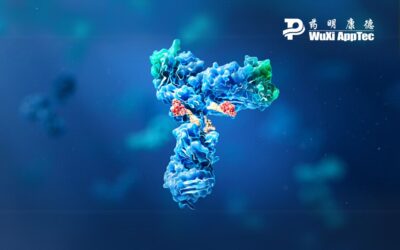Preclinical drug-drug interactions (DDI) studies provide preliminary analysis and predict risk potentials for the investigated compounds when co-administrated with other drugs during future in-human trials. Knowledge pertaining to DDI studies is still rapidly evolving. As of August 2020, the U.S. Food and Drug Administration (FDA) released new guidance for the DDI of Therapeutic Proteins (TP). This guidance is geared toward large molecules and other novel therapeutics, aiming to adjust methodology testing criteria and ensure research quality.
While the new guidance is recommended but not required, DDI studies provide a reliable risk-based testing approach for drug developers of Investigational New Drugs (IND) and candidates of Biologics License Applications (BLA). Laboratories utilize in vitro testing as the main methodology for DDI studies, as it can better predict the risks to humans compared to in vivo studies. When a more dynamic model is required, laboratories use Physiologically Based Pharmacokinetic (PBPK) studies.
Co-administering drugs is common in therapeutics, so identifying risks and understanding typical circumstances informs future studies and product development. To clarify potential DDI risk, testing investigates the “perpetrator” and “victim” roles.
The Roles: Perpetrator and Victim
When investigating a DDI, researchers put TPs in roles as both the perpetrator (influences other drugs) and the victim (influenced by other drugs), mediated in ways representative of how the human body would metabolize the molecule. The guidance recommends relevant studies and provides a decision tree to assist developers in understanding the specifics of the necessary DDI studies.
The new guidance has simplified the study design process by listing multiple DDI mechanisms for TPs, such as metabolic enzymes or transports. Selecting tests which are most relevant and meaningful for each program is now more scientifically-sound and justifiable, and less reliant on clinician expertise when unexpected results or difficult decisions arise.
DDI testing also offers clearer pathways by allowing more options for phenotyping studies, such as the range of enzymes. These results aid drug developers to narrow their focus on the effects and risks their TPs present. No matter the position – perpetrator or victim – if the traditional cytochrome P450 (CYP) enzymes do not identify the major metabolic players, other testing pathways remain. Drug developers have a better chance of investigating DDI interactions with the breadth of enzymes available.
Preparing Test Plans
Increasing the range of enzymes for phenotyping has expanded the studies available for drug developers.
For laboratories to help determine which tests are most applicable to your TPs, drug developers should provide ample information about the investigational drug. Relevant information to share with your laboratory partner could include principal routes of elimination, the contribution of enzymes and transporters to the drug disposition, the effects of the drug on enzymes and transporters, and more.
With this new guidance, it is now a more streamlined and accurate procedure to conduct the appropriate studies, data analysis and interpretation to predict the DDI potentials. Testing laboratories with a broad range of enzymes for phenotyping can help design a strategy that will provide you with an accurate analysis of DDI potential.
To learn more about the DDI assays related to specific therapeutic protein(s), contact WuXi AppTec today.
Follow WuXi AppTec Laboratory Testing Division on LinkedIn for industry insights and project support.
As a global company with operations across Asia, Europe, and North America, WuXi AppTec provides a broad portfolio of R&D and manufacturing services that enable the global pharmaceutical and life sciences industry to advance discoveries and deliver groundbreaking treatments to patients. Through its unique business models, WuXi AppTec’s integrated, end-to-end services include chemistry drug CRDMO (Contract Research, Development and Manufacturing Organization), biology discovery, preclinical testing and clinical research services, helping customers improve the productivity of advancing healthcare products through cost-effective and efficient solutions. WuXi AppTec received an AA ESG rating from MSCI for the fourth consecutive year in 2024 and its open-access platform is enabling around 6,000 customers from over 30 countries to improve the health of those in need – and to realize the vision that “every drug can be made and every disease can be treated.”


